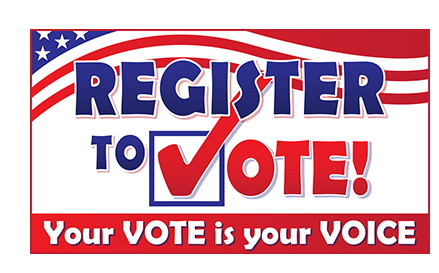
- Details
- By Marlon WhiteEagle
Native Vote 2024. If you plan to vote this election cycle, registering to vote, or updating your information, is the first step to finalizing your plan. Whether you plan to vote in federal, state, or local elections, be sure to follow your state’s specific instructions for casting your ballot.
Each state has different rules and deadlines, so it’s important to plan and contact your local polling place. All states, except North Dakota, require voters to register in accordance with the National Voter Registration Act of 1993.
There are three ways to register to vote: online, by mail, or in person. The good news is nearly half the states allow same day registration; some even allow same day registration on Election Day. The National Mail Voter Registration Form can be completed online and printed out, or printed out to be filled by hand, signed and dated, and dropped off or mailed to your local polling site.
Currently, 42 states allow online voter registration, while Arkansas, Mississippi, Montana, New Hampshire, North Dakota, South Dakota, Texas, and Wyoming do not.
Taking the step to register will provide clearer information for other election options, like learning about deadlines to register, requesting an absentee ballot, absentee ballot return deadlines, and dates for early voting.
If you or your family or friends live abroad or serve in the military, requesting an absentee ballot may be the only option to cast a vote. It’s important to give yourself enough time to request, fill out, and mail back absentee ballots from wherever you live, especially if it’s abroad.
To register online, you may be required to enter your state photo ID or driver’s license number to complete the process. If you’ve moved, it is recommended you update your address on your ID at least 30 days prior to voting.
In general, registering to vote requires your name, contact information-like phone number and email address, home address, and address where absentee ballot, if required, should be mailed.
Upon successful completion of registering to vote, you will be mailed a Voter Registration Card, which confirms that you are a registered voter. You do not need to present your card when voting, but many states require some form of ID.
Typically, the voter registration card contains your name, address, address of your polling place, and political party if you entered that on your registration. Voter ID laws govern what type of ID is needed to cast your vote. Requirements range from strict photo ID required, non-photo ID required, and no ID required. 24 states require photo ID, 11 states require non-photo ID, and the remainder require no ID. There are 36 states that have voter ID laws. Only 16 states accept tribal IDs.
In certain instances, voters may be allowed to cast a provisional ballot and will need to return with the required documents for their ballot to be counted.
To avoid any uncertainty or delays on Election Day, plan ahead, register to vote, and ensure your information and ID are up-to-date prior to heading to the polls.
Help us defend tribal sovereignty.
At Native News Online, our mission is rooted in telling the stories that strengthen sovereignty and uplift Indigenous voices — not just at year’s end, but every single day.
Because of your generosity last year, we were able to keep our reporters on the ground in tribal communities, at national gatherings and in the halls of Congress — covering the issues that matter most to Indian Country: sovereignty, culture, education, health and economic opportunity.
That support sustained us through a tough year in 2025. Now, as we look to the year ahead, we need your help right now to ensure warrior journalism remains strong — reporting that defends tribal sovereignty, amplifies Native truth, and holds power accountable.
 The stakes couldn't be higher. Your support keeps Native voices heard, Native stories told and Native sovereignty defended.
The stakes couldn't be higher. Your support keeps Native voices heard, Native stories told and Native sovereignty defended.
Stand with Warrior Journalism today.
Levi Rickert (Potawatomi), Editor & Publisher

